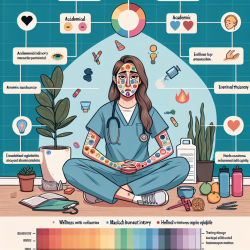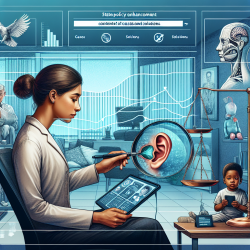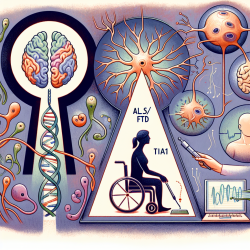Introduction
Burnout is a critical issue that has been widely recognized in healthcare professionals, but it often starts as early as medical school. The research article titled "Assessment of burnout in medical students using the Maslach Burnout Inventory-Student Survey: a cross-sectional data analysis" sheds light on the prevalence and predictors of burnout among medical students. This blog post aims to translate these findings into actionable insights for practitioners, particularly those involved in educational settings like TinyEYE, which provides online therapy services to schools.
Understanding Burnout in Medical Students
The study conducted at the University of Illinois College of Medicine utilized the Maslach Burnout Inventory-Student Survey (MBI-SS) to assess burnout levels among medical students. The survey revealed significant burnout rates, with 40.3% of respondents reporting self-perceived burnout. The dimensions of burnout were measured in terms of emotional exhaustion (EE), cynicism (CY), and academic efficacy (AE).
Key Findings and Predictors
The study identified several predictors of burnout:
- Curriculum Phase: Students who were out-of-phase in their curriculum were more likely to experience burnout.
- Gender: Female students showed higher levels of emotional exhaustion.
- Wellness Initiatives: The perceived effectiveness of wellness initiatives was inversely related to burnout levels.
- Motivation: Lower motivation for medical school was associated with higher burnout.
Implications for Practitioners
For practitioners, especially those working with educational institutions, these findings underscore the importance of early identification and intervention. Implementing effective wellness initiatives can significantly reduce burnout. Programs that focus on enhancing student motivation and providing tailored support for students who are out-of-phase can be particularly beneficial.
Actionable Strategies
Here are some strategies that practitioners can implement:
- Regular Assessments: Conduct regular assessments using tools like the MBI-SS to identify at-risk students early.
- Customized Wellness Programs: Develop wellness programs that are responsive to the specific needs of students, such as stress management workshops and mental health support.
- Support Systems: Establish support systems for students who are out-of-phase in their curriculum to help them reintegrate smoothly.
- Motivation Enhancement: Incorporate motivational interviewing techniques to help students align their academic goals with their personal values.
Encouraging Further Research
While this study provides valuable insights, there is a need for further research to explore the longitudinal effects of burnout and the efficacy of various interventions. Practitioners are encouraged to collaborate with academic institutions to conduct comprehensive studies that can lead to more robust solutions.
To read the original research paper, please follow this link: Assessment of burnout in medical students using the Maslach Burnout Inventory-Student Survey: a cross-sectional data analysis.










